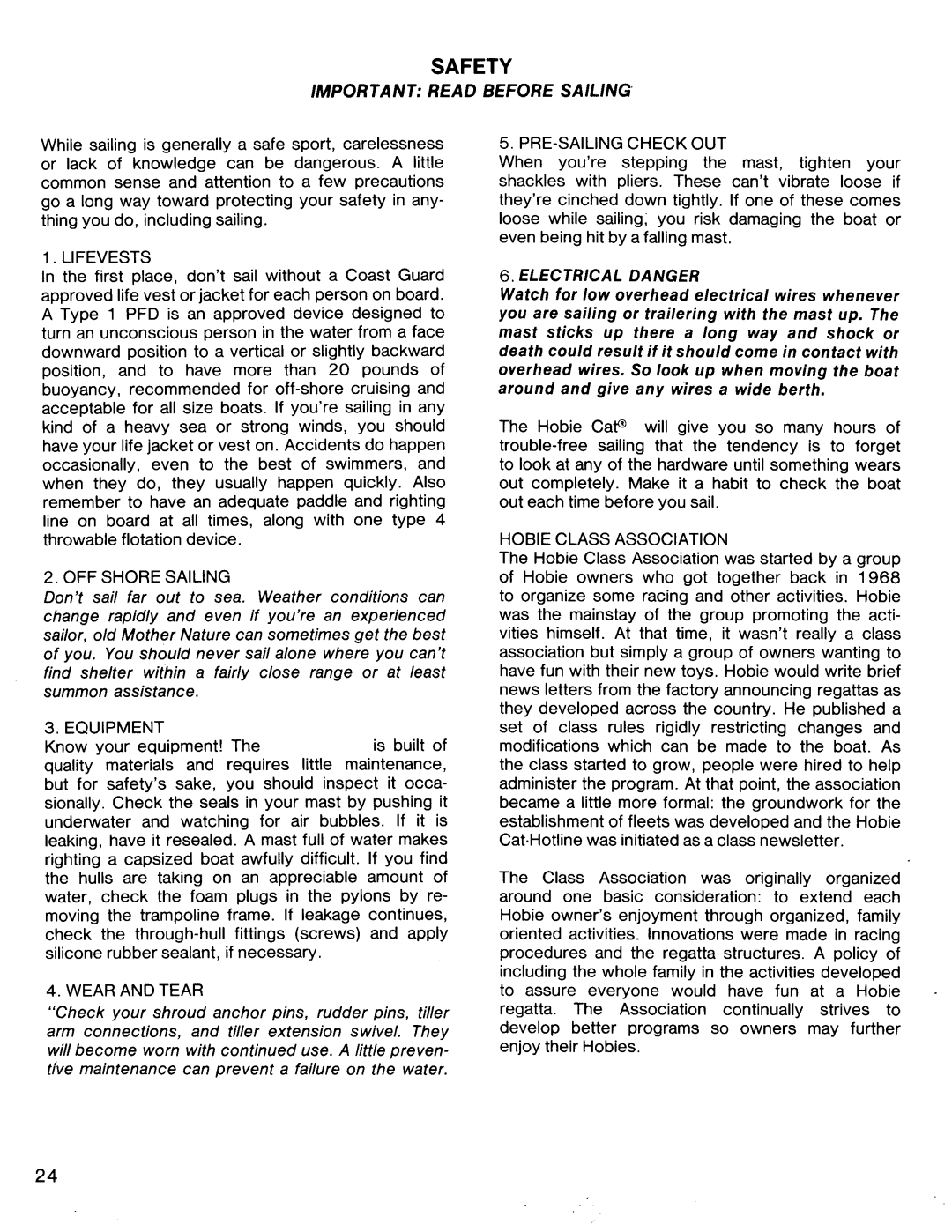Hobie 16 specifications
The Hobie 16 is a legendary catamaran that has become synonymous with fun and performance in the world of sailing. Launched in 1971, this iconic vessel has captured the hearts of countless enthusiasts and competitive sailors alike. One of the main features of the Hobie 16 is its distinctive design, characterized by its lightweight construction and a width of 8 feet. The twin hulls provide exceptional stability, allowing for thrilling rides even in challenging conditions.At the core of the Hobie 16’s charm is its polyethylene hull construction, which offers robustness and durability while keeping the weight manageable. The catamaran's design emphasizes speed and agility, making it a favorite among racers. Sailors can achieve impressive speeds, often soaring along at 20 knots or more, thanks to the efficient sail area and aerodynamic shape.
The Hobie 16 is equipped with a 16-foot sail, designed for optimal performance. The rigging system features a single mast, with an easy-to-handle main and jib sail configuration. This setup not only enables quick sail adjustments but also makes the boat accessible for sailors of all skill levels, from beginners to seasoned racers. The user-friendly features extend to the trampoline design, which provides a comfortable place for crew members to maneuver during a race or cruise.
In terms of technology, the Hobie 16 includes a range of innovative features aimed at enhancing the sailing experience. The boat is designed to be launched and rigged quickly, allowing for spontaneous adventures on the water. The Hobie Trampolines, made from durable materials, provide a safe space for the crew and add to the overall performance by minimizing drag.
The craftsmanship of the Hobie 16 is evident in its reputation for longevity; many boats remain in use decades after their initial production. Regular maintenance and care can extend the life of this vessel even further. Additionally, the Hobie 16 is often seen at various sailing events and competitions, demonstrating its competitiveness and community appeal.
Versatile and adaptable, the Hobie 16 can be enjoyed for recreational sailing, thrilling races, or simply lounging with friends on the water. Its combination of speed, stability, and ease of handling ensures that it will remain a favorite choice for catamaran enthusiasts around the world. Whether you’re a novice or a professional sailor, the Hobie 16 offers a unique sailing experience that is both exhilarating and rewarding.

